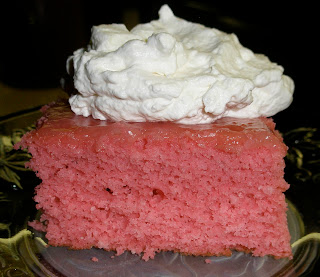You’ve been asking, so here it is—my adventure making Guava Cake!
The memory of first tasting this cake is still so vivid to me. I remember having it as a special celebration. One time for Girls’ Day, our guy friends in my dorm bought a guava cake for a group of us girls. It was so good and we had such fun. I will do a post on both the Girls’ Day and Boys’ Day celebrations in Hawaii when those dates get near.
So, my guava cake baking adventure began with a trip to an Asian market to purchase guava and guava nectar. I bought a can of guava, but then found some huge, fresh guavas, which had just arrived from Hawaii. It was fun to make the cakes with fresh guava, but let me warn you—they were mighty expensive!
I used two different recipes and then made a third cake using some “tweaks” of my own.
CAKE NUMBER ONE is basically a spice cake. My family liked it, but I would describe it to be like an applesauce spice cake—not the traditional guava cake I remember. I don’t care for strong clove flavors, so I left out the cloves.
Unique Guava Cake (Spice)
2 cups white sugar
1 cup butter
4 eggs
1 cup guava pulp (I used fresh, but canned is way less expensive! I puréed the guava with some of the nectar. When done, remember to measure a total of 1 ½ cups of combined nectar and pulp.)
½ cup guava nectar
3 cups flour
1 tsp ground nutmeg
1 ¼ tsps baking soda
¼ tsp ground cloves (I left this out)
¼ tsp ground cinnamon
 Preheat oven to 350 degrees. Grease and flour one 13 X 9 inch pan.
Preheat oven to 350 degrees. Grease and flour one 13 X 9 inch pan.Sift together flour, nutmeg, soda, cinnamon, and cloves.
In another bowl, mix together guava pulp and juice.
In another bowl, cream butter and sugar. Add eggs, one at a time. Add flour mixture and guava mixture alternately to creamed mixture. Pour batter into prepared pan.
Bake at 350 degrees for 30-35 minutes. (I used my smaller oven. It was done after about 27 minutes. I suggest checking after 25 minutes and testing with a toothpick. It will also cook more quickly if using convection.)
I served the cake topped with real whipped cream.
CAKE NUMBER TWO is a fancy and rich guava cake you might see for a birthday celebration. Again, I puréed fresh guava with the nectar. This is a very simple recipe that uses a cake mix as its base. Very yummy and rich!
Easy Guava Cake
1 pkg. white, yellow, or strawberry cake mix (I used white. I think the strawberry would make it taste different. To get the cake more pink, add red food coloring to your nectar/purée mix)
1 1/3 c guava juice (I prefer nectar, as it is a little thicker, and I added some purée as well.)
3 eggs
1/3 c vegetable oil (I used 1/3 c more purée in place of the oil)
Filling:
1 8-ounce package cream cheese, softened
1/3 cup sugar
1 tsp vanilla
1 small package Cool Whip (I whipped up the real stuff)
Glaze:
2 c guava juice (or nectar)
½ cup sugar
¼ c cornstarch
Bake cake (in two round cake pans) according to package directions, substituting guava juice/nectar/purée for the water (and for the oil as I did)
Beat cream cheese with hand mixer until fluffy. Add sugar and vanilla and beat in. Slowly fold in the whipped cream and refrigerate until ready to use.
In a medium sauce pan, bring the 2 cups juice/nectar and sugar to a boil.
Make a paste (not too thick—keep it runny) out of the cornstarch and a small amount of water.
Remove guava juice from heat and stir in the cornstarch paste. (Warning! I’d let the guava cool a moment and slowly add paste while rapidly stirring the guava. If you get lumps, you can strain and/or spoon out later)
Return to heat and bring back to a boil (I kept stirring) for about 1 minute.
Cool glaze in refrigerator.
Assemble cake with filling between layers and glaze over the top. (I let the glaze dribble over the sides.)
Easy Guava Cake (Cheryl's Version)
CAKE NUMBER THREE is the cake above, baked in a 9 X 13 pan with no filling, but I did put the glaze on top. I also added red food coloring to my guava nectar/purée mixture to create a more pink color to the cake. I also substituted extra purée for the oil. Then I served it with real whipped cream. This one was definitely our favorite!!
Happy Baking!
Cheryl











